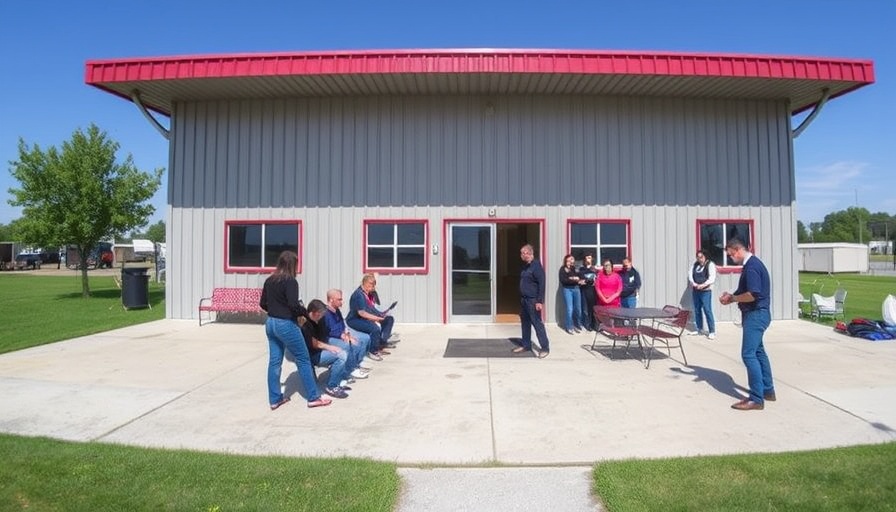
Turning a Skydiving Center into a Community Haven
The recent decision by Father Joe’s Villages to convert a former indoor skydiving center in East Village, San Diego, into affordable housing for the homeless marks a transformative approach to addressing homelessness in urban areas. The project, which has been approved for a budget of $115 million and will result in 164 new apartments, combines innovative architectural design with a pressing social necessity.
Creating a Diverse Living Space
Deacon Jim Vargas, CEO of Father Joe’s Villages, has emphasized the project's goal of accommodating various demographics, including veterans and families. With 108 studio and 54 one-bedroom apartments, the design intends to meet the housing needs of both single individuals and those with families. The emphasis on studio apartments correlates with current market demands in urban areas, demonstrating a smart awareness of community needs.
Innovative Architectural Concepts
The architectural vision for this project, which involves constructing a 15-story tower over the existing three-story skydiving center, is groundbreaking. Vargas noted that such approaches are common in cities like New York, but this would be a novel undertaking in San Diego. The design features a transition floor with an outdoor terrace that enhances the livability of the building while preserving the historical aspects of the skydiving center.
Addressing Homelessness with Practical Solutions
Homelessness is a multifaceted issue affecting many urban centers across the United States, including Bakersfield. The closure of the skydiving center in 2017 to serve as a Homeless Response Center indicates a flexible approach to leveraging existing structures for social good. This conversion focuses not only on immediate shelter but also on providing comprehensive services through the dedicated offices located within the same building.
Future Outlook: Construction and Community Impact
The construction process is set to begin in the coming year, representing a significant step forward in community engagement and support for the homeless population. As cities grapple with rising homelessness rates, initiatives like this become vital touchpoints for alleviating the issue. Moreover, the anticipated benefits extend beyond housing; local economies may see a boost from increased employment opportunities created by the project.
The Evolution of Adaptive Reuse in Urban Planning
Adaptive reuse of buildings like the skydiving center illustrates a growing trend in urban planning, where existing spaces are repurposed to serve contemporary needs. This could serve as a model for other cities, including Bakersfield, which wrestle with similar housing crises. Beyond addressing immediate housing needs, such projects can inspire innovative solutions to urban challenges across California.
Your Role in Shaping Community Solutions
As citizens and stakeholders become more engaged in local initiatives, understanding the significance of projects like the skydiving center’s conversion is crucial. Local community members in Bakersfield and beyond must advocate for sustainable housing solutions that balance affordability with urban growth.
This conversion is not just about building homes; it’s about fostering a sense of community and addressing the complex social fabric that underpins urban living. Get involved with local housing initiatives, whether through advocacy, support networks, or community engagement. Your voice can profoundly influence the future of your community.
With innovative housing solutions being implemented in various California cities, both residents and local leaders can create robust discussions on homelessness and community development. It’s imperative to stay informed, analyze successful models like this, and work collectively towards sustainable solutions that transform lives.
 Add Row
Add Row  Add
Add 



Write A Comment